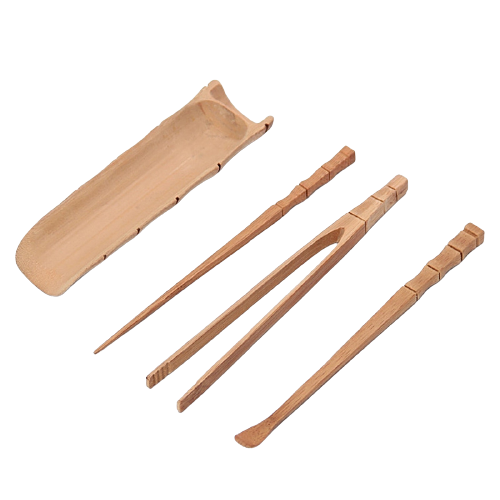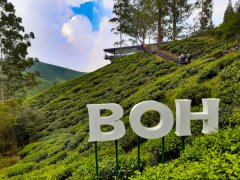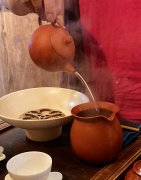What are the pictures of making tea? what's the name of each? introduction to the tea set for drinking high-grade tea.
TEAWARE has different English terms for tea sets, such as Lu Yu, the main cradle of tea culture. In the records left by predecessors, "TEAWARE" rather than "TEA TOOL" is used to refer to all the utensils used to make tea, and tea sets are widely used as peripherals for all brewing and drinking tea. There will be many parts and props to form the category of tea props, but the corresponding tea varies greatly according to the type of tea brewed, which is often referred to as the tea ceremony and has important local significance in many cultures. Tea set (Teaware)-Tea set in the context of Taiwan culture (Tea tool)-Tea set for making tea (Tea set)-Tea set for table service set (tea service) Tea ceremony (Tea ceremony) introduction since the tea raw material is not simply used as a food, the behavior of eating tea has gradually become an experience of taste, and the utensils have played an important role since the Tang Dynasty with Lu Yu's "Tea Classic" 24 parts. To the four treasures of cooking tea in the Ming and Qing dynasties, the use of tea utensils is like a skill, becoming a kind of tea ceremony culture that is preserved and operated repeatedly.

General finishing of common terms (non-essential complete set) boiling kettle: the modern way of boiling water is mostly electric kettle, which is made of gold, silver, copper, iron, stainless steel, clay and so on. Heating furnace: the water heater is separated from the air stove, the use of gas or electric heating is the most convenient, there is also the choice of charcoal, smooth furnace. Teapot: a kind of tea maker with a variety of materials and sizes. The principle of selection is mainly in the shape of liking and pleasing to the eye. Too big teapot is easy to drink, too small teacup is dissatisfied, so to measure the usage and preferences, you need to test the water on the spot to see if it goes well. Cover cup: a kind of tea maker, which can also be called "cover bowl". It is generally believed that if you pick a thin tire, it is not easy to burn your hands, and there are also differences in size. You can choose a cover cup according to the size of your palm. Compared with the clay teapot, the soup comes out faster and the flavor of the tea is brighter. Generally speaking, the material is mainly made of porcelain or glass, and the advantage is that it can soak different teas for a short time without affecting each other's flavor. Tea tray: in the wet soaking method, place all the tea sets. Pot bearing: in the dry bubble method, place the cover cup and the purple sand pot in the center of the stage. Justice cup: also known as tea sea, tea cup, uniform cup. Pour the brewed tea into the justice cup and distribute it equally to the guests, which can be used to blend the tea. Smell incense cup: it is a tall, thin cup with a slender wall that can agglomerate the fragrance of tea. First pour the tea into the smell cup, and then pour into the tea cup to drink, smell the tea before drinking, fully taste the flavor of the tea. Tasting teacup: short cup, suitable for drinking. There are big and small, thick and thin, according to different occasions and preferences to choose and use. Fragrant oolong tea is suitable for small cups, Pu'er tea can be used with large cups; thick cups can be used for cold winter, which has a better heat preservation effect, and thin cups are used to cool the tea quickly in summer. The inside of the teacup had better be white, which is convenient to observe the brown color. Cups: place tasting cups and smelling cups, usually in the same group as teacups, for the purpose of elegance and hygiene, so as to avoid touching the edge of the cup where the guests are on the mouth. Tea towels: clean, wipe the dripping water on the table and keep it dry and clean. Table flag: a traditional decoration on the Chinese dining table, similar to a long tablecloth, is also an important prop to create atmosphere in the tea table layout. Water side: also known as water pan, tea wash, tea residue jar, watered square, is the trash can in the tea set. Take the water from the warm pot and the excess tea, you can also put the tea that has been soaked. If there is a tea tray in the wet bubble method, the water side can be eliminated and the tea residue can be discarded. Tea clip: the cup can be used for sanitary ware. Tea needle: usually one pointed and one flat at both ends, it has two uses. The flat section is also called tea poke, and the tea stem can be dialed; the tip section can be used to clean up the spout blocked by tea. Teaspoon: it is also called teaspoon. Japanese teaspoon is similar to tea dialing function, while western teaspoon is an instrument used to measure dosage. Tea: a slightly curved arc-shaped container, generally made of bamboo. Take the tea out of the tea jar and first weigh the tea and then put it into the teapot to make the tea. Tea lotus: similar to the function of tea, but can be more easily poured into small-caliber utensils, such as lotus petals narrow at one end and wide at the other, is a tea prop. Tea leakage: similar to filter screen, can be used to filter sundries, tea dregs and other functions. Detong: place a tea set, similar to the concept of a penholder. Tea knife: it is a sled tool used to remove tea bricks, tea cakes, Tuo tea and other tight-pressed tea. Tea pet: the material is mostly purple sand or Yixing clay. When making tea, it will be cooled with tea, and the color will slowly change for appreciation. Lid: the position where the lid of the teapot is placed. Tea jar: a jar used to preserve tea. Tin, tinplate and clay are the most common materials. Ideal tea cans can preserve the flavor of tea and avoid being affected by light, moisture and mold. Other measuring instruments: such as measuring cup, electronic scale, timer, thermometer and so on.
Important Notice :
前街咖啡 FrontStreet Coffee has moved to new addredd:
FrontStreet Coffee Address: 315,Donghua East Road,GuangZhou
Tel:020 38364473
- Prev

What kind of tea is good for the world's top ten famous elite brands of tea, Malaysia BOH? Where can I buy it?
There is BOHTEACENTRE's top sightseeing tea estate in the Kim Malun Plateau, which is about 260km from Kuala Lumpur and about three hours' drive. It is one of the tourist attractions in Malaysia since the 1930s. It has also become Malaysia because the cool temperature is 18 degrees Celsius.
- Next

Top 10 Ceramic Tea set Brands list what are the top 10 knowledge about the use of tea sets in six tea sets
Here we integrate some tea prop questions that are often asked, as a convenient reference article for beginners to learn. The same tea utensils may have multiple names in practical use, or may have different habits in different regional cultures in the Chinese context, and may play different roles for the same instrument name.
Related
- What ratio of water temperature and ground does the smart cup method use to press coffee? The difference between brewed coffee and filtered coffee?
- What is the standard process for the purpose of coffee cup testing? What is the difference between hand-brewed coffee and cup testing?
- How to use hand-brewed coffee paragon small golden balls? How does cold coffee lock in the aroma of coffee?
- Is American coffee black? What is the difference between American coffee and drip coffee?
- Unexpected! Well-known tea beverage brand Lele Tea will withdraw from the Zhengzhou market!
- Starbucks enters the fashion and beauty industry?! Netizen: Give me an ice American eye cream
- Why can American refills for free? The difference between Americano and American drip pot coffee
- Being chased out of the rain in front of Starbucks?! Store: Sheltering from rain under umbrellas poses a safety hazard
- The white moonlight has changed?! Lucky launches "Big Winter Pear American"
- Hand-brewed coffee three-stage method, high-sweet and universal brewing method to share! What does the high sweet water level of hand-brewed coffee mean?

